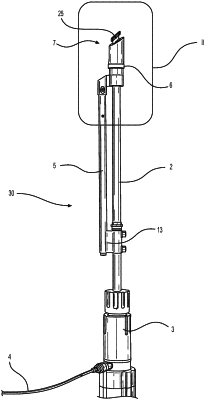| CPC A61B 17/11 (2013.01) [A61B 17/00234 (2013.01); A61B 17/0644 (2013.01); A61B 17/1152 (2013.01); A61B 17/322 (2013.01); A61B 2017/00243 (2013.01); A61B 2017/00252 (2013.01); A61B 2017/00455 (2013.01); A61B 2017/00526 (2013.01); A61B 2017/00969 (2013.01); A61B 2017/0641 (2013.01); A61B 2017/1107 (2013.01); A61B 2017/1135 (2013.01); A61B 17/1155 (2013.01); A61B 2017/1157 (2013.01); A61B 2017/3225 (2013.01); A61B 2090/0807 (2016.02); A61B 2090/3937 (2016.02); A61F 2/064 (2013.01)] | 13 Claims |

|
1. A method for providing atrial access in a patient comprising:
opening the pericardium of the patient;
making an intercostal incision to provide access to the patient's thoracic cavity;
puncturing a left atrium of the patient at a desired location using a hollow needle inserted into the thoracic cavity via the intercostal incision;
inserting a guide wire into the left atrium of the patient through the hollow needle;
removing the needle;
guiding an anastomotic device having a nose cone and being loaded with a prosthetic vascular graft of sufficient length for one end to reach into the left atrium of the patient while a second end of said graft remains outside the thoracic cavity, to the left atrium of the patient via the guide wire;
pushing the anastomotic device against a wall of the left atrium of the patient until the nose cone penetrates the wall of the left atrium of the patient;
positioning the anastomotic device to create an anastomosis to the left atrium of the patient;
deploying the anastomotic device to create the anastomosis between the left atrium of the patient and the prosthetic vascular graft to provide a hemostatic connection between the left atrium and the prosthetic vascular graft;
removing the anastomotic device from the patient and
temporarily closing the prosthetic vascular graft outside of the thoracic cavity of the patient using one or more hemoclips after removing the anastomotic device from the patient.
|